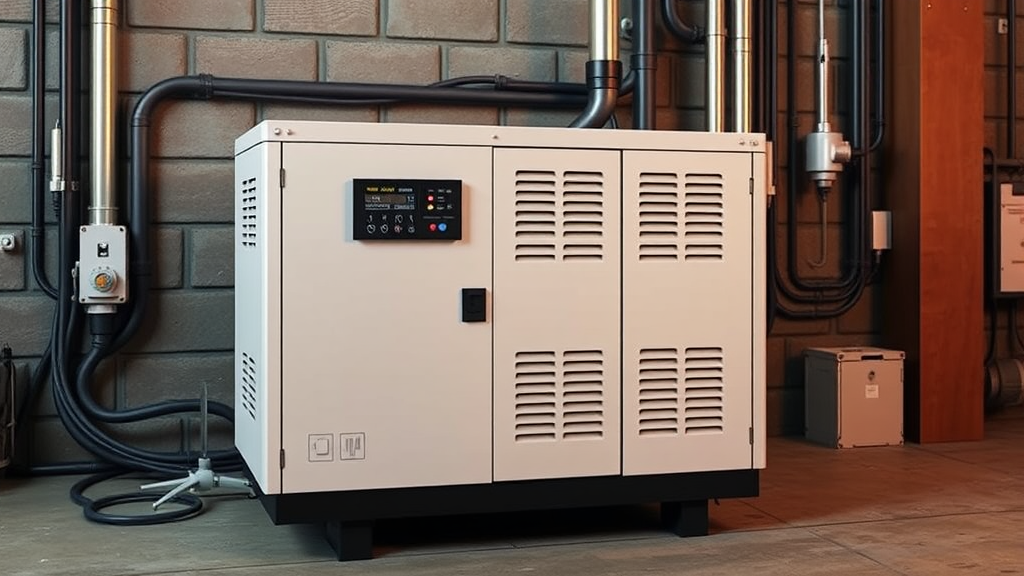Physical Address
304 North Cardinal St.
Dorchester Center, MA 02124
Physical Address
304 North Cardinal St.
Dorchester Center, MA 02124

When selecting a pure sine wave inverter, understanding key factors can help you make an informed decision that meets your specific power conversion needs. Pure sine wave inverters play a critical role in transforming direct current (DC) from batteries or solar panels into high-quality alternating current (AC) that closely mimics utility grid power.
Pure sine wave inverters generate smooth, consistent electrical output that closely resembles standard household electricity. Unlike modified sine wave alternatives, these inverters produce a clean power signal that protects sensitive electronic devices from potential damage or performance issues.
Key performance metrics to evaluate include:
• Continuous power rating
• Peak power surge capacity
• Efficiency percentage
• Operating temperature range
• Voltage compatibility
Before purchasing, calculate your total power consumption by:
| Device | Watts |
|---|---|
| Laptop | 65W |
| Smartphone Charger | 10W |
| LED Light | 15W |
| Total Base Consumption | 90W |
| Safety Margin (20%) | 108W |
When evaluating pure sine wave inverters, consider these critical factors:
Ensure the inverter matches your power source’s voltage, typically 12V, 24V, or 48V DC systems. Mismatched voltages can cause inefficient performance or potential equipment damage.
Many electronic devices require momentary high-power startup. Select an inverter with adequate surge capacity to handle initial power demands of motors, compressors, or complex electronic equipment.
High-quality inverters incorporate efficient cooling mechanisms like:
• Aluminum heat sinks
• Internal fans
• Thermal protection circuits
Explore reliable manufacturers and resources:
• OutBack Power
• Xantrex
• Magnum Energy
• Warranty coverage
• Customer support availability
• User reviews
• Technical specifications
• Certification standards
Professional installation is recommended to ensure:
• Proper electrical connections
• Optimal system performance
• Compliance with local electrical codes
• Warranty preservation
By carefully evaluating your specific power needs, understanding technical specifications, and considering long-term reliability, you can select a pure sine wave inverter that provides reliable, clean power for your applications.
When investing in a pure sine wave inverter, understanding the critical technical specifications can help you make an informed decision that meets your power conversion needs. Modern inverters are sophisticated devices that transform DC power from batteries or solar panels into clean, stable AC power for various applications.
The power rating determines the total watts your inverter can handle continuously. You’ll want to calculate your total power requirements by:
• Adding up watts for all connected devices
• Including startup surge requirements for motors and compressors
• Considering a 20-25% overhead capacity for unexpected loads
Most pure sine wave inverters operate with standard input voltages:
• 12V DC (common for automotive and small system applications)
• 24V DC (ideal for medium-sized solar and backup power systems)
• 48V DC (preferred for larger renewable energy installations)
When evaluating inverter efficiency, focus on:
Professional-grade pure sine wave inverters typically offer 90-95% conversion efficiency, ensuring minimal energy loss during power transformation. Lower THD percentages (less than 3%) indicate cleaner power output compatible with sensitive electronic equipment.
Advanced inverters should include comprehensive protective mechanisms:
• Overload protection
• Short circuit safeguards
• Thermal shutdown capabilities
• Reverse polarity protection
• Voltage regulation mechanisms
| Protection Feature | Purpose |
|---|---|
| Overload Protection | Prevents system damage during excessive load conditions |
| Short Circuit Protection | Interrupts power immediately during electrical fault |
Efficient heat dissipation is crucial for long-term inverter reliability. Look for:
Recommended resources for deeper technical insights:
Pure sine wave inverters produce smoother, more consistent power compared to modified sine wave alternatives. This makes them superior for:
• Medical equipment
• Advanced electronics
• Precision instruments
• Motor-driven appliances
Professional installers recommend choosing inverters with less than 3% total harmonic distortion for maximum equipment compatibility and performance.
Beyond core specifications, evaluate:
When selecting a pure sine wave inverter, comprehensive research and precise matching of technical specifications to your specific power requirements will ensure optimal performance and long-term reliability.
Selecting the ideal pure sine wave inverter requires careful consideration of multiple technical and practical factors. By understanding your specific power requirements, assessing key specifications like wattage, input voltage, and surge capacity, you can make an informed decision that protects your valuable electronic equipment and ensures reliable power conversion.
Your investment in a high-quality pure sine wave inverter goes beyond mere technical specifications—it’s about creating a robust power solution that meets your unique needs. Whether you’re preparing for off-grid living, emergency backup, or mobile power applications, the right inverter can provide clean, stable electricity that safeguards sensitive electronics and supports consistent performance.
Remember that not all inverters are created equal. Take time to compare different models, read user reviews, and consider warranties. Prioritize reputable brands that offer transparent technical documentation and reliable customer support. While cost is an important factor, don’t compromise on quality, as a superior pure sine wave inverter represents a long-term investment in power reliability.
Ultimately, your choice should balance performance, efficiency, and compatibility with your specific power needs. By methodically evaluating technical specifications, understanding your power consumption requirements, and selecting a well-designed pure sine wave inverter, you’ll ensure optimal power conversion and protection for your electronic devices.
The right inverter is more than just a piece of equipment—it’s a critical component that bridges your power source with your electrical devices, delivering clean, stable electricity whenever and wherever you need it.
Check out one of the top rated batteries & inverters here – https://www.healthrefreshed.com/charge-controllers-inverters